Data and Artificial Intelligence, Strategic Pillars of Organisations and Key Players in SILICON DATA & AI
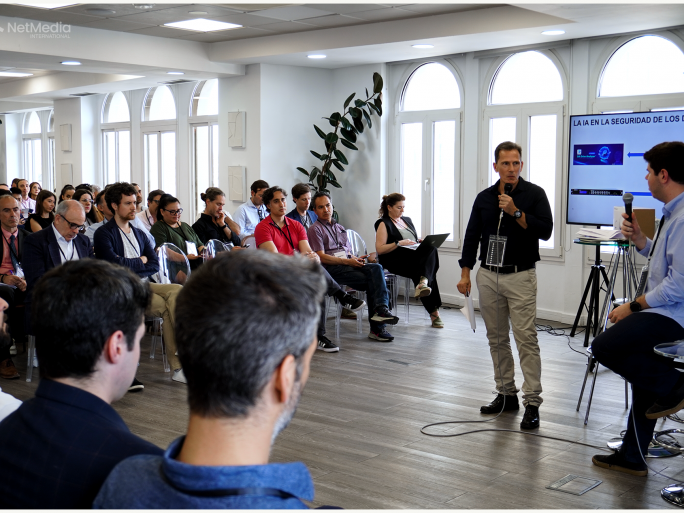
After the hype that many still question, the real use cases of Artificial Intelligence are beginning to outweigh the doubts about this technology. The union of AI and data is today a winning horse on which the latest Silicon Spain event has revolved.
The irruption of generative AI has meant the “democratisation” of Artificial Intelligence, but it has also led many to imagine infinite possibilities with this technology, which is now the time to land.
It is true that there are already many real cases in which generative AI and even more so “classic” AI provide great value, but there are still many unknowns to be answered.
What is the current ROI of such a project? How has the role of the CDO changed? How can data quality be guaranteed? What IT infrastructure do organisations need to be able to really exploit the full potential of AI? The list of questions is long, and SILICON DATA & AI was the focus of the SILICON DATA & AI.
Measuring for efficiency
Organised by Silicon España and NetMedia Europe and attended by more than 150 IT professionals, both experts and those responsible for data and AI, the meeting was led by Daniel de Blas, head of Branded Content at NetMedia, who opened by analysing how, although there is optimism about the possibilities that AI opens up in companies, there are still barriers such as “training or resistance and fear of change”.
Thus, Daniel de Blas pointed to the first National AI Study conducted by CloserStill Media, in collaboration with Silicon Spain and NetMedia, which reveals how the use cases of AI in our country are already beginning to be known and tested but “half of the companies are not measuring the results obtained with data or AI projects because either simply by doing them they feel they are improving or because they do not even really know how to measure or what the ROI in generative AI is”, he pointed out.
And of course data, the data that companies generate and on which AI, of whatever kind, is based to optimise processes, manage documents or make decisions, was the common thread of the event and the protagonist of the first talk, given by Guillermo Alcover, Sales Specialist at QNAP.
Secure data, at the service of companies and always available, is currently one of the great demands of the market and this involves the systems with which to store this data and allow access to it.
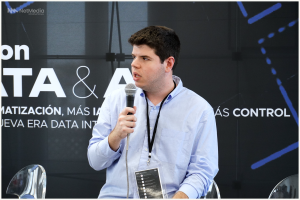
High availability
Thus, explained Alcover, QNAP has opted for the integration of Artificial Intelligence and high availability in its solutions. These innovations range from intelligent surveillance and cloud management to optimisation of manufacturing execution systems and video editing collaboration.
“We have in fact a team within the company specially created and oriented to develop new solutions that have AI as a base” he explained and gave as an example those of “facial recognition, in video surveillance tasks, where applying AI allows a 200 percent higher performance or in text detection, where the time required is reduced by 20 percent”.
Another of the great needs that companies have when it comes to data is to interpret it, but above all to display it quickly and easily. This is the task of DIGDASH, which was also present at the event with Basile Audard, Business Intelligence Consultant for the technology company.
Specialising in data visualisation, DIGDASH is asked by companies to provide them with dashboards to help them make better decisions. “There is more and more data to manage, analyse, etc. and therefore it is increasingly important to be able to access it,” said Audard.
Making the most of this data is the goal of the company’s solutions, which has developed a conversational interface powered by Artificial Intelligence within its Business Intelligence solution that allows DIGDASH users to make natural language queries to generate dashboards and take advantage of open data, without the need for technical knowledge.
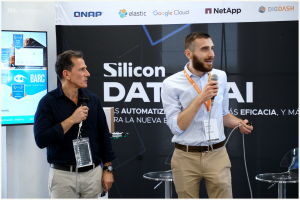
Visualising data to extract its value
“AI helps us to model data, to build, to automate and even to interpret it, for predictive tasks,” he added, while putting on the table one of the major barriers to really being able to extract the full value of a company’s information.
“The challenge is data sovereignty, knowing where the data comes from, who has access to it, etc.”, reflected the DIGDASH consultant.
This is one of the responsibilities and surely one of the concerns of the Chief Data Officer or CDO, which was the subject of the first SILICON DATA & AI dialogue.
Carlos Caballero, Head of Operations at Club CDO Spain & Latam explained that companies hire or create the figure of the CDO to drive digital transformation, their main task is to generate use cases and for this the greatest input they have to generate value in the organisation is data”.
In that sense, Caballero pointed out how “the CDO has to navigate on two axes; one practical and pragmatic, identifying AI use cases but aligned with the business strategy; and another of innovation, of generating new business from data”.
Ensuring that AI is used ethically is another of the Chief Data Officer’s objectives and above all, he said, “establishing what is meant by AI because more than 90 percent of companies say they have implemented some type of AI but only 35 percent have a definition of what an AI system is in their organisation”.
For his part, Javier Anguiano, Director Enterprise Sales South EMEA at Alteryx, stressed that AI is precisely “the way in which their solutions can help companies make smarter data-driven decisions”.
“We do advanced analytics with usability as our flagship, so that any professional, without the need to be a data scientist, can really take advantage of our tools,” he said.
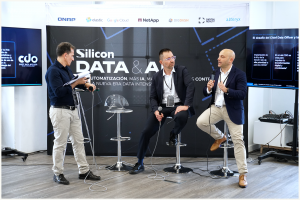
The role of the CDO
He pointed out that the big challenge for CDOs today is to manage the expectations of the rest of the company. “Everyone comes to them because they want to develop something with generative or classical AI, but the first thing they have to be clear about is what you want to achieve, how you are going to measure it and what investment it requires in terms of time and resources. In addition to grounding all that, the CDO has to see what data the company has, of what quality… It’s not easy”.
The first round table of the event focused precisely on the investment needed to tackle a data and AI project and more specifically on its ROI. As Daniel de Blas introduced, we are at a time when organisations are fully aware of the value of data and the increasingly urgent need to activate it to obtain value in all aspects of the business.
“However, this era of data, automation and artificial intelligence also plunges us into a period of uncertainty, changes in the culture and relationships in the company, in how projects are approached and even in a redefinition of the roles of technology and business. What should the CDO and data scientists do or not do? Should they acquire a business role? Do they have a duty to evangelise and train? How should the uncertainty associated with AI be managed? How should the development of data projects be managed?
In this sense, Ángel Barrado, Strategy Manager at Codere, pointed out that the main task of IT professionals now is to “evangelise about the real scope of AI and how difficult it is to have quality information”.
“Many times companies think that they have data that is useful and it is not true, there is no standardisation of the data”, he added.
Technologies that are still immature
Moreover, in his opinion, these technologies, such as generative AI, are not yet mature, “so we have to be very cautious; we are still learning”. But, he advised, “always try to be one step ahead; do your research. It doesn’t matter so much if you fail”.
Alongside him, Víctor Andrés Martin, Alstom‘s Data Science and AI Project Leader, was in favour of “tackling small use cases that really get results”.
Although at Alstom the AI they are using is more “classic”, it is true that they already have important and valuable use cases. “We are already applying it, for example, to predict the temperature that the rails of the railway track can reach in order to avoid any heat deformation.

For Víctor Andrés Martin, the CDO “is the bridge between data and business”, a figure that at Alstom “usually comes from the business side to be able to give value to the business through data”.
For advice, Alstom’s Data Science and AI Project Leader has no doubt: “Surround yourself with the best; the relationship between technologist/company/customer is essential”.
Data centres and connectivity in the AI era
At the halfway point of SILICON DATA & AI, it was the turn of another of the big players when it comes to data and AI: data centres, the “physical infrastructure behind these technologies”, said Robert Assink, CEO of Digital Realty in Spain.
“We have moved from the physical economy to the digital economy and today to the data economy. Companies want to optimise processes, make decisions, innovate, find new monetisation models, etc. and all with data as the basis”, he pointed out. A scenario that causes an avalanche of data that also makes it necessary to bring business infrastructures and applications closer to where this data is generated, among other reasons, due to latency issues in order to be able to access it”.
A challenge in which the irruption of AI is also drastically changing the data centre sector, as Robert Assink pointed out, “old data centres cannot assume the network capacity or connectivity needs required by Artificial Intelligence, radically transforming the technical configuration of the rooms to provide them with greater power density”.
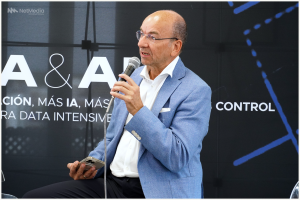
Necessary changes to which Digital Realty is already responding with high-density colocation services that allow companies to overcome the difficulties associated with exponential and unstructured data growth, as well as with the development and deployment of AI applications, which require considerable processing capacity and specialised infrastructure to support high power densities and temperature regulation.
Assink was succeeded at the event by someone who also knows a lot about intelligent infrastructure, Jaime Balañá, NetApp’s CTO for Latin America, who said in his speech that “half of the world’s data that can be used by AI is stored in a NetApp ‘bucket’, according to our CEO, George Kurian”.
They have undoubtedly achieved this by adapting their solutions to the new business reality marked by challenges such as “data is scattered and companies need to be able to manage and access it and storage that keeps data close to where it is needed, something that NetApp enables,” said Balañá.
Other challenges are performance, “because computing in general is getting faster and faster, so the data feed has to be faster too; and silos, because if a company has several storage providers, their data is separated, they can’t talk to each other. In fact, at NetApp we see ourselves as the ‘plumbers’ that channel that data to where it needs to go.

And of course, security is also critical, and in this aspect Balañá boasts that NetApp is “the most secure storage on the planet, even certified by the American NSA”.
Realities and myths
The event came to an end with a more suggestive topic, the myths and realities of AI, a round table in which, as Daniel de Blas explained, some erroneous beliefs about AI were analysed, such as “everything is possible with this technology”.
This was quickly clarified by Oscar Cabanillas, Senior Manager Solution Architecture for South EMEA at Elastic, who explained that “the technology is there, but there is a huge boom. Today everything is AI; it is true that there is computing capacity, thanks to the cloud, there is data and very cool things are being done but we have to land it and regulate it”.
Cabanillas also pointed out that there is currently no clear ROI for these projects, but I am committed to researching and explaining these technologies in the public sector, for use cases that improve the lives of citizens. And that, of course, policies and not looking so much at ROI but at use cases that generate value.
And again a call to experiment little by little “to make small developments that show what they contribute to the business”.
José Antonio Martin, Artificial Intelligence Lead, Strong AI at Repsol Technology Lab agreed: “No, there is no ROI, it is expected but not yet. People have to understand what AI is and what it is not, what the advantages and risks are, it will take time but little by little it will happen”.

“There has been a lot of hype about Chat GPT and it has to be said, generative AI does not think, it does not reason, it does not solve problems… It is a tool that allows us to access a set of data with natural language. It would be great if we could, for example, get it to help us navigate the multitude of information that is out there, especially in helping the elderly, social care, etc.”.
He concluded by calling for us to use and test this technology “and above all, don’t be alarmed”.
In short, SILICON DATA & AI put on the table the opportunities but also the risks and obstacles that the union of data and AI presents, a relationship that is undoubtedly already transforming the business environment.